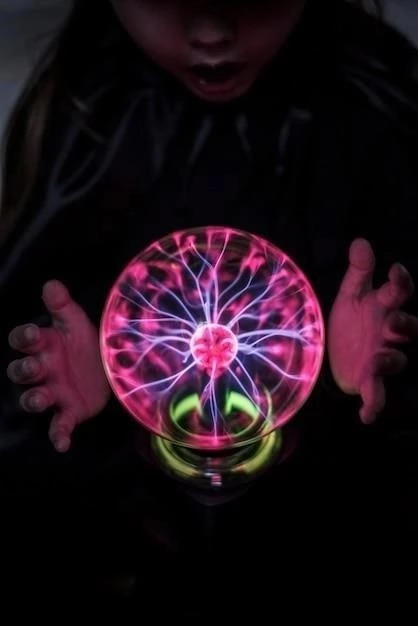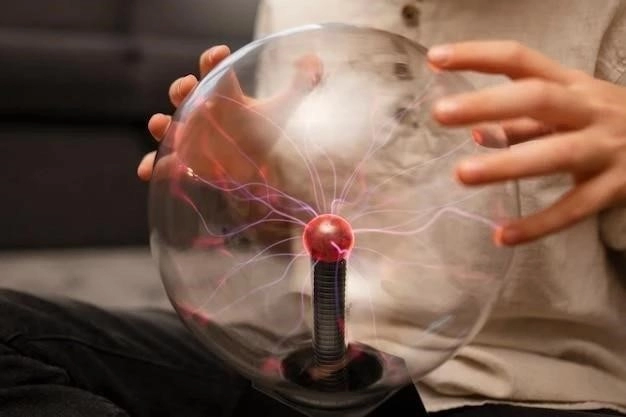Consciousness, the state of being aware of oneself and the world around us, is perhaps the most profound mystery facing science. While immense progress has been made in understanding the brains intricate workings, the question of how subjective experience arises from neural activity remains elusive. This article delves into the fascinating landscape of consciousness research, exploring the current understanding, methodologies, and persistent challenges in unraveling this enigma.
Defining the Elusive: What is Consciousness?
Consciousness, despite being familiar to all, defies a simple definition. It encompasses a spectrum of aspects, including:
- Subjective Experience (Qualia): The unique, personal quality of our perceptions, sensations, and emotions. This includes the redness of a sunset, the taste of chocolate, or the feeling of love.
- Self-Awareness: The ability to be aware of oneself as an individual, distinct from the environment.
- Attention and Focus: The selective processing of information, highlighting certain aspects of our experience while filtering out others.
- Voluntary Control: The capacity for intentional action and decision-making.
A comprehensive theory of consciousness needs to address all these facets and how they emerge from the physical matter of the brain.
Neural Correlates of Consciousness (NCCs): Seeking the Physical Footprints
A central pursuit in consciousness research is identifying the Neural Correlates of Consciousness (NCCs). These are the minimal sets of neural events and mechanisms sufficient for a specific conscious experience. The premise is that by pinpointing the brain activity directly associated with conscious states, we can gain insights into the biological basis of subjectivity.
Several methodologies are employed in this quest:
1. Brain Imaging: Peering into the Active Brain
- Functional Magnetic Resonance Imaging (fMRI): Measures brain activity by detecting changes in blood flow. fMRI has excellent spatial resolution, allowing researchers to identify regions associated with specific conscious experiences.
- Electroencephalography (EEG): Records electrical activity in the brain through electrodes placed on the scalp. EEG offers excellent temporal resolution, capturing the rapid fluctuations in brain activity associated with consciousness.
- Magnetoencephalography (MEG): Detects magnetic fields produced by brain activity. MEG boasts both good spatial and temporal resolution, making it a valuable tool for studying the dynamic nature of consciousness.
2. Studying Altered States of Consciousness
Examining how consciousness changes in various states, such as sleep, dreaming, anesthesia, and under the influence of psychedelic substances, offers valuable clues about the underlying mechanisms. For example, observing the brain activity patterns during different sleep stages reveals how consciousness fluctuates throughout the night.
3. Investigating Neurological Conditions
Disorders affecting consciousness, such as coma, vegetative states, and brain lesions, provide insights into the critical brain regions and networks necessary for conscious awareness. For instance, damage to specific areas like the thalamus or the brainstem can lead to profound disturbances in consciousness.
Theories of Consciousness: A Landscape of Ideas
While a definitive theory of consciousness remains elusive, several prominent contenders attempt to explain the brain-consciousness link. These include:
1. Global Workspace Theory (GWT)
GWT proposes that consciousness arises when information is broadcast widely across the brain, making it available for various cognitive processes. In this model, consciousness is akin to a theater stage, where a spotlight of attention illuminates specific information for global access.
2. Integrated Information Theory (IIT)
IIT posits that consciousness is a fundamental property of the universe and is directly related to the amount of integrated information a system possesses. The more interconnected and interdependent a systems parts, the more conscious it is.
3. Recurrent Processing Theory
This theory emphasizes the role of feedback loops and recurrent processing in the brain. It suggests that consciousness arises from the continuous interaction and reverberation of information within and between different brain regions.
4. Orchestrated Objective Reduction (Orch-OR)
Proposed by physicist Roger Penrose and anesthesiologist Stuart Hameroff, Orch-OR suggests that consciousness arises from quantum mechanical processes occurring within microtubules, structures found within neurons. This theory, while intriguing, remains controversial and lacks widespread acceptance within the scientific community.

Challenges and Future Directions: The Road Ahead
Despite significant advancements, the quest to understand consciousness faces several persistent challenges:
1. The Hard Problem of Consciousness
Philosopher David Chalmers coined the term “hard problem of consciousness” to highlight the difficulty of explaining why and how physical processes in the brain give rise to subjective experience. This philosophical conundrum continues to spark debate and influence scientific inquiry.
2. Bridging the Explanatory Gap
A significant challenge lies in bridging the gap between objective brain activity and subjective experience. How can we translate neural firing patterns and brain wave oscillations into the richness of our inner lives?
3. Developing a Comprehensive Theory
Existing theories often focus on specific aspects of consciousness, and a unifying framework that accounts for all its facets remains elusive. Future research needs to integrate findings from neuroscience, psychology, philosophy, and perhaps even physics to develop a truly comprehensive theory.
Conclusion: Unraveling the Tapestry of Subjectivity
The science of consciousness is a vibrant and rapidly evolving field. While the mystery of subjective experience persists, dedicated researchers continue to make remarkable progress in unraveling the neural mechanisms underlying our conscious awareness. Through innovative methodologies, interdisciplinary collaborations, and a relentless pursuit of understanding, we are gradually piecing together the intricate tapestry of consciousness, illuminating the most profound aspect of what it means to be human. The journey is far from over, but each step forward brings us closer to unraveling one of natures most captivating secrets.
Advancing the Frontiers: Emerging Approaches and Promising Avenues
The quest to unravel the mysteries of consciousness is perpetually pushing the boundaries of scientific inquiry. Several emerging approaches and promising avenues are poised to significantly advance our understanding of this complex phenomenon:
1. Computational Neuroscience and Artificial Consciousness
Computational modeling and artificial intelligence (AI) are playing increasingly important roles in consciousness research. By simulating brain activity and developing artificial systems with consciousness-like properties, researchers can test existing theories and generate new hypotheses. This field is still in its infancy, but it holds immense potential for elucidating the computational and algorithmic principles underlying consciousness.
2. The Interplay of Networks: Connectomics and Dynamics
Understanding the brains intricate network architecture and its dynamic interplay is crucial for comprehending consciousness. Connectomics, the study of the brains wiring diagram, is mapping the complex network of connections between neurons and brain regions. Simultaneously, research into brain dynamics is exploring how patterns of neural activity, oscillations, and information flow contribute to conscious experience. The interplay between these structural and functional aspects is likely to be key to unlocking the secrets of consciousness.
3. Expanding the Scope: Non-Human Consciousness
While the primary focus of consciousness research has been on humans, there is growing recognition of the importance of studying consciousness in other species. Comparative studies examining the neural and behavioral correlates of consciousness in animals, such as primates, birds, and cephalopods, are providing valuable insights into the evolutionary origins and potential diversity of conscious experience.
4. The Ethical Imperative: Consciousness and Technology
As our understanding of consciousness deepens and technology advances, ethical considerations become increasingly paramount. The development of sophisticated AI systems, brain-computer interfaces, and novel interventions for disorders of consciousness raises profound ethical questions about the nature of personhood, agency, and moral responsibility. A robust ethical framework grounded in scientific understanding will be essential for navigating these uncharted territories.

Conclusion: Towards a Unified Science of Consciousness
The pursuit of understanding consciousness is not merely an academic exercise; it is a profound endeavor with far-reaching implications for science, medicine, philosophy, and our understanding of what it means to be human. While the journey is challenging, the ongoing convergence of diverse disciplines, innovative technologies, and bold ideas offers hope that we are on the cusp of a new era in consciousness research. By embracing interdisciplinary collaboration, rigorous scientific inquiry, and a deep respect for the ethical implications of our discoveries, we can strive towards a unified science of consciousness that illuminates the full spectrum of this enigmatic phenomenon.
Delving Deeper: Consciousness as an Emergent Phenomenon
An increasingly prevalent perspective within the science of consciousness posits that consciousness is an emergent property of complex systems. This implies that consciousness arises not from a single brain region or process, but rather from the intricate interplay of numerous neural elements. This emergent view aligns with several key observations:
1. The Principle of Non-Reducibility
Conscious experience, with its subjective and qualitative nature, cannot be fully reduced to or explained solely by its underlying neural components. This principle suggests that consciousness, while grounded in neural activity, possesses properties and complexities that transcend the individual neurons themselves.
2. The Role of Integration and Complexity
A growing body of evidence suggests that the level of consciousness is directly proportional to the degree of integration and complexity within a system. Brains exhibiting high levels of interconnectedness, diverse neural populations, and dynamic information processing tend to be associated with richer and more sophisticated conscious experiences.
3. Emergence in Other Domains
The concept of emergence is not unique to consciousness. In various scientific domains, from physics to biology, complex systems often exhibit emergent properties that are not predictable from their individual components. Examples include the wetness of water, the collective behavior of ant colonies, and the patterns emerging in complex ecosystems.

Investigating the Mechanisms of Emergence: A Multifaceted Approach
Understanding how consciousness emerges from the brain necessitates a multifaceted approach that integrates insights and methodologies from diverse fields:
1. Network Neuroscience: Unveiling the Architecture of Consciousness
Network neuroscience, with its focus on the interconnected nature of brain activity, is providing valuable insights into the neural substrates of consciousness. By analyzing the topology, dynamics, and information flow within brain networks, researchers are identifying key hubs and pathways that may play crucial roles in integrating information and supporting conscious awareness.
2. Computational Modeling: Simulating and Exploring Consciousness
Computational models offer a powerful tool for investigating the emergent properties of complex systems. By simulating brain activity at different levels of abstraction, researchers can test hypotheses about how specific neural mechanisms, network interactions, or computational principles contribute to the emergence of consciousness. Artificial neural networks and other machine learning techniques are proving particularly valuable in this endeavor.
3. Integrated Information Theory (IIT): Quantifying Consciousness
IIT proposes that consciousness can be quantified and measured based on the amount of integrated information a system possesses. This theory provides a mathematical framework for assessing the degree of interconnectedness and interdependence within a system, potentially allowing for objective comparisons of consciousness levels across different brains or even artificial systems. While still under development, IIT offers a promising avenue for bridging the gap between subjective experience and objective measurement.
Conclusion: Embracing Complexity in the Quest for Understanding
The science of consciousness is steadily progressing, driven by a spirit of interdisciplinary collaboration, technological innovation, and a willingness to embrace complexity. The emergent view of consciousness, with its emphasis on the intricate interplay of neural networks, dynamic processes, and computational principles, is providing a compelling framework for future research. As we delve deeper into the mechanisms of emergence, we move closer to unraveling the enigma of consciousness, illuminating the remarkable capacity of the human brain to generate subjective experience from the symphony of neural activity.










